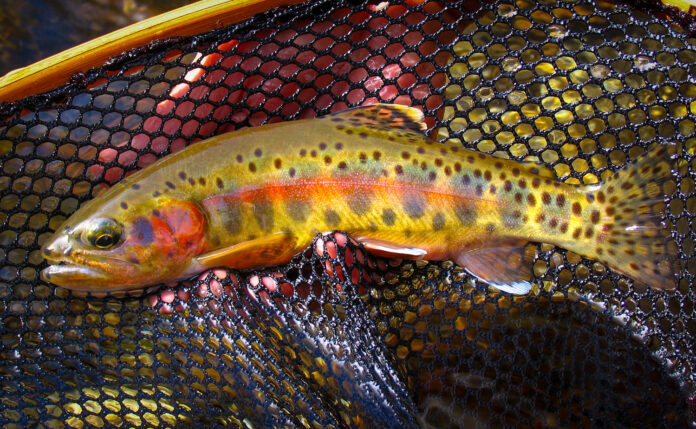
BY ERNIE COWAN
MAMMOTH LAKES—With cooler fall weather still a month or so away, Eastern Sierra anglers who love to catch fish should now head to higher elevations for something completely different and a lot more exciting.
Drive-to lakes and streams now are far less generous at providing hungry fish that the wild waters requiring some shoe leather and energy to reach.
But the reward is epic. Not only will you discover soul-changing scenery, solitude and adventure, but you may also engage is some of the most exciting fishing you have ever seen.
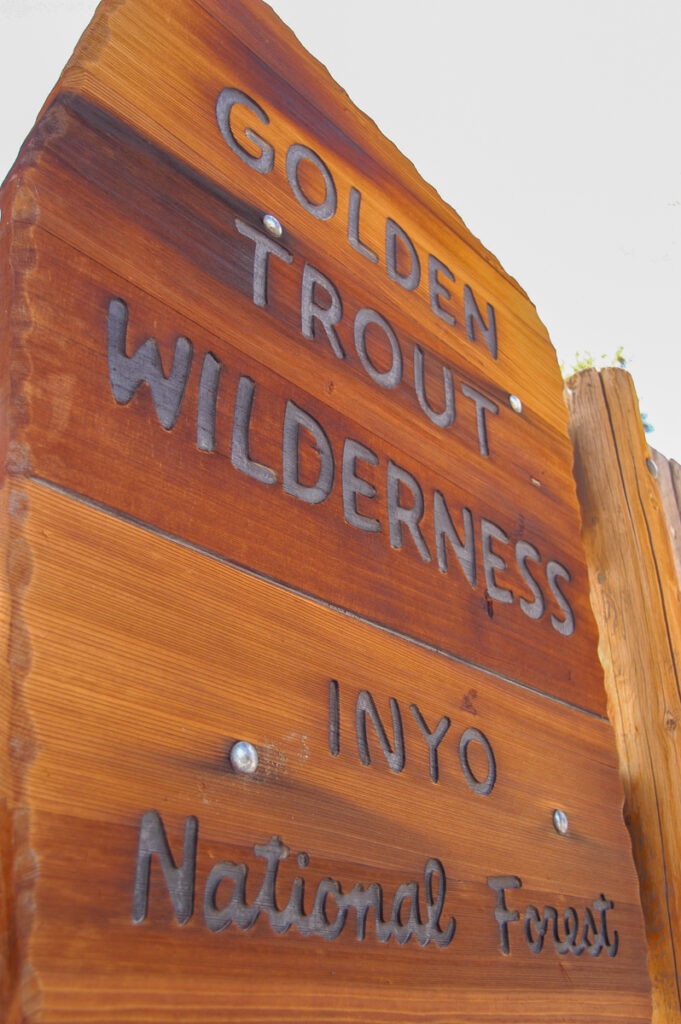
Sure, the resort lakes are well stocked with monster trophy fish that will ignite a smile on any angler, but there is nothing quite like the glory of a wild and colorful brook trout, or a magnificent native golden trout taking a fly.
These high-country fish have also not seen much fishing pressure and they have a short feeding season of only a few months until snow and ice come again. This makes them ravenous feeders, and that means non-stop action for anglers.
Of course, if you are not the hiking type, you can still enjoy plenty of summer fishing at lakes and streams accessible by vehicle, just make sure to be on the water very early or late and work the deepest holes where the water is cooler.
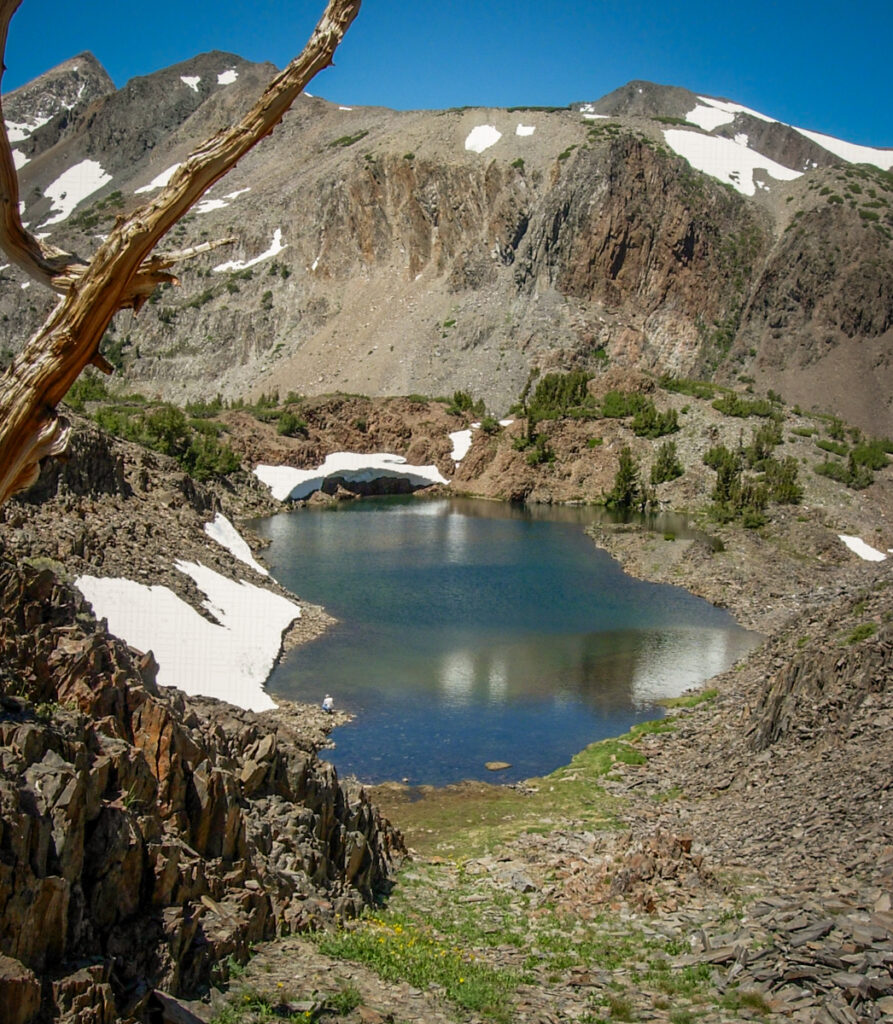
You are not likely to land a monster wallhanger while hike-in fishing, but you will catch lots of fish and enjoy solitude and overpowering wilderness beauty.
Most hike-in anglers are using flies. No need for a heavy tackle box, just a handful of the most common flies, maybe a spool of light leader and a small net.
Catch and release is best, since you are not going to hike home with a load of small fish. That means barbless hooks.
A fly rod or lightweight spinning gear rigged with fly and bubble are ideal choices for the hike-in trout hunter.
Most of the wilderness lakes hold wild rainbows, brown and brookies, but at you get higher, you will find those treasure troves filled with golden trout.
In the Twenty Lakes Basin behind Saddlebag Lake, I’ve caught and released over 60 fish while making the 8-mile loop. That included brookies, goldens, and rainbows, and then a small brown in Mill Creek on the way out to earn a Sierra Grand Slam T-shirt.
On another hike into Gaylor and Granite lakes west of the Tioga Pass entry into Yosemite, I spent a few hours catching brook trout non-stop as they lined up in the gin-clear water to take my fly.
Other areas offering great backcountry fishing include the Cottonwood Lakes area out of Lone Pine, wild likes on the trails behind South Lake in Bishop Creek Basin, Little Lakes Basin from road’s end in Rock Creek Canyon, the chain of wild lakes south of Lake Mary in Mammoth Lakes, wilderness areas west of June Lake Loop, a chain of lakes west of Virginia Lakes.
Local tackle shops can give you good suggestions, from short, relatively easy hike-in locations to more remote and challenging spots. They may be harder to reach, but the rewards will be spectacular and worth every drop of sweat.
Here’s a look at current conditions along the Eastern Sierra from south to north.
Bishop area and south—Hot at lower elevations and this means not much of a bite unless you out early or late. Lake Sabrina stocked with 3,000 pounds of trophy rainbows, including subcatchable fish, but those will be ready for next season.
Jared Smith at Lake Sabrina said anglers have been catching with trolled Thomas Buoyants, early and late in the day. Jigs, fly-lined nightcrawlers and good old PowerBait balls are getting it done.
The inlets are the place to be at South Lake. Hint: That’s where the cold water flows in.
The usual baits and lures are working here, but the newsflash is that trolling 3- to 5 colors with Thomas Buoyants, Kastmasters or a nightcrawler and flasher has been producing some bigger fish.
The forks of Bishop Creek have been stocked with 1,000 pounds of trout, and they are hungry.
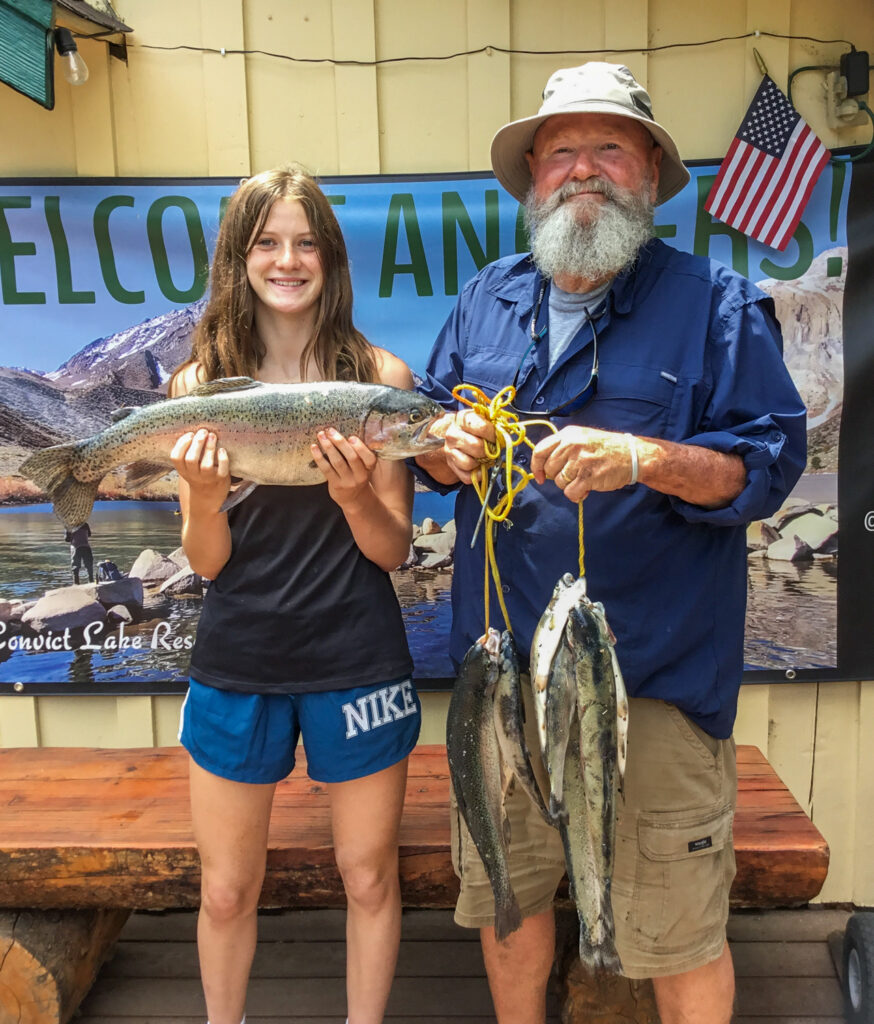
Mammoth Lakes area—Fish are deep at Rock Creek Lake and that means boats, tubes or long casts into the holes. But the fish are there, and the lake has been well stocked with trophy rainbows.
The creek below the lake has been fishing well in the evenings. As bugs show up.
The best action has been the wild lakes in the Little Lakes Basin from the end of Rock Creek Lakes Road.
Convict Lake is full of fish, and the broken record tune is early and late. The inlet has been good with a 6.75-pound-plus rainbow coming in last week for Emily Street, who was tossing a black jib from shore into the tongue water.
Guides from The Troutfitter in Mammoth Lakes are calling Crowley Lake action fair to very good. It depends on where you are.
“The crowds have discovered the McGee Creek channel but it’s not the only game in town. Any stream inlet has potential, it’s just a matter of finding the fishable spots amongst the proliferation of weeds,” said Kent Rianda from The Troutfitter.
He reports that fish have moved into shallower waters at 4- to 16 feet. Perch fry have also made an extremely early entrance, which means choosing the right food imitation is getting trickier.
“If you’re doing great on midges but it shuts down around 9:30, try switching to Callibaetis nymphs. Likewise, around noon be ready to switch to Damselfly or perch fry imitations.
Success at Mammoth Lakes depends on how early you are willing to get up. Water temperatures are high, and midday has been slow.
Best bet is to rent a boat and find out where the holes and underground springs are. When fish are biting, the usual baits and lures are on the menu.
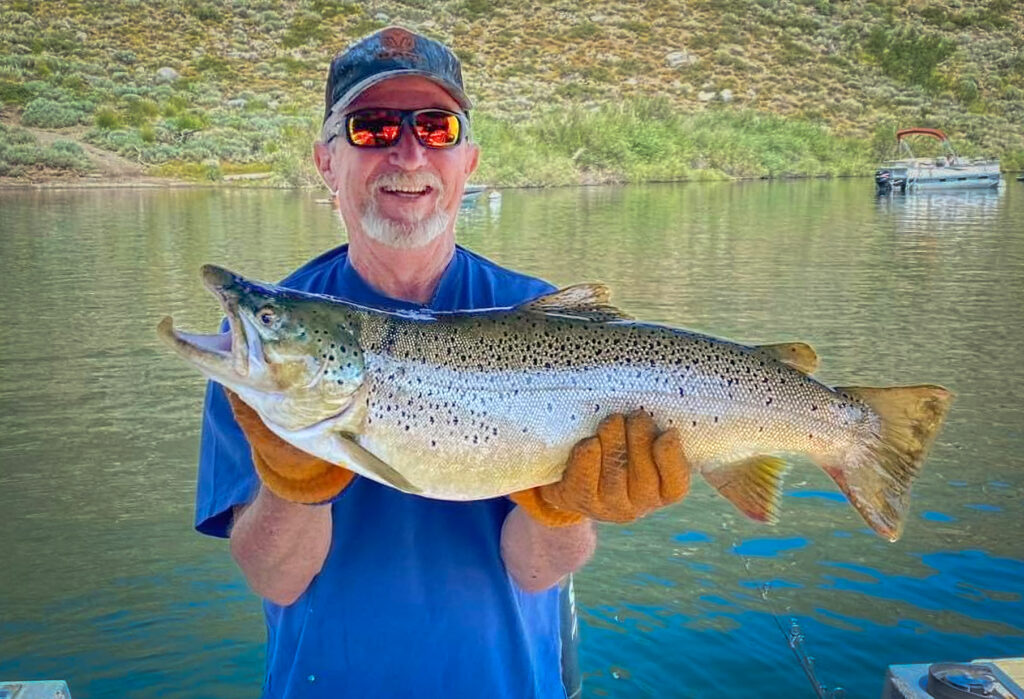
June Lake Loop-Lee Vining—The headlines here are the 9.3-pound brown caught at Grant Lake.
Tony Hallum is the new operator at Grant Lake Resort and was excited to share the news with WON when angler Steve Monaghan showed up with photos of the huge brown he caught and released using an F13 Rapala.
Evenings continue to be prime time at Grant and trolled Rapala is the lure of choice.
June, Gull and Silver lakes are well stocked with trophy and DFW rainbows, but they are holding deep.
The action on Rush Creek has slowed until water temperatures come down a bit.
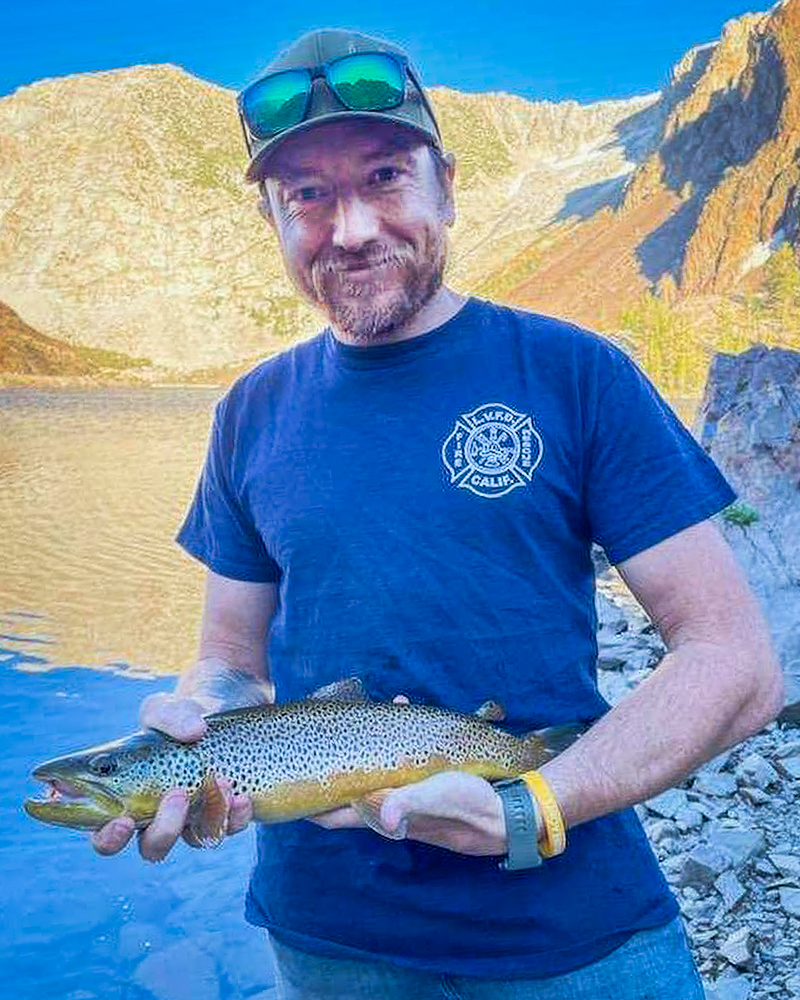
Virginia Lakes—Bridgeport area—Like other areas, the best catching has been at the backcountry lakes with short hikes from Virginia Lakes. Blue, and Cooney are good for some bigger brookies, and a bit farther out at Frog Lakes, anglers will also find eager brookies.
The legendary East Walker River is warming up in summer heat, and Jim Reid at Ken’s Sporting Goods in Bridgeport is urging anglers to monitor conditions and stay off the water when fish get sluggish so they will survive.
Bridgeport Reservoir is producing large numbers of fish, with bait fishing in the deeper channels the best beet. Perch are also on the chew, mostly taking trolled Thomas Buoyants, Speedy Shiners and nightcrawlers.
Upper Twin Lake continues to produce some huge browns.
Austin Byers is normally found at the Upper Twin Lake boathouse, but slipped out late in day last week and connected with a 7.12-pound brown that inhaled a trolled Rapala.
Both Upper and Lower Twin lakes have also been producing some nice kokanee.



